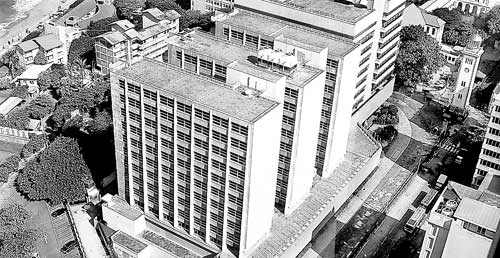.jpg) Sri Lanka’s position in the budget transparency index deteriorated from 13 - 53 from 2010 - 2012. It was a steep decline in the transparency process. The index is based on pre-budget information, mid-cycle reviews, and post-budget information and reporting. Data integrity and the availability of data are both important.
Sri Lanka’s position in the budget transparency index deteriorated from 13 - 53 from 2010 - 2012. It was a steep decline in the transparency process. The index is based on pre-budget information, mid-cycle reviews, and post-budget information and reporting. Data integrity and the availability of data are both important.
The GDP growth figure has been discredited as it has been revised upward without any basis, as revealed by MP Anura Kumara Dissanayake in Parliament. The Ravaya newspaper has also revealed that the inflation calculation is also manipulated.
"There is every reason to believe that the data for the 2013 4th quarter may be massaged to justify the conclusion that has already been reached for the full year 2013. It must be noted that the IMF is also raising questions about the integrity of the data"
Today we are facing a situation where the integrity of the data provided by both the Department of Census and Statistics and the Central Bank are unreliable.
The doubts raised are not an aspersion on the integrity of the vast number of honest professionals working in these institutions, but on the political authority and the few senior officials who succumb to political pressure.
The Governor of the Central bank has gone on record dismissing the allegations made by politicians without answering the specific allegations. It is

unfortunate that such statements have to be made by the Governor, as he himself is a political appointee to such a position.
The estimate provided for the tax revenue as a percentage of the GDP has been continuously overestimated. For example in 2009 when revenue to the GDP was 12.75% it was estimated that it would be 15% in 2012. In 2012 the actual tax revenue to the GDP was 12%. Each year the same overestimation has continued for tax revenue, government revenue and GDP growth.
"In 2009 when revenue to the GDP was 12.75% it was estimated that it would be 15% in 2012. In 2012 the actual tax revenue to the GDP was 12%. Each year the same overestimation has continued for tax revenue, government revenue and GDP growth"
There are also questions of transparency in terms of the timing and release of data.
From 2009-11 the government revenue numbers were published every month for the preceding 36 months. In 2012 it was available for 9 months. In 2013 the number were released sporadically. The Financial Times of January 3 has detailed explanation. It makes one believe that the inconsistency provides for subsequent manipulation. There is every reason to believe that the data for the 2013 4th quarter may be massaged to justify the conclusion that has already been reached for the full year 2013. It must be noted that the IMF is also raising questions about the integrity of the data.
Wrong assumptions and incorrect data also lead to distorted policy decision. The claim that poverty has reduced from 15.2% in 2006 to 6.4% in 2013 is based on an official poverty line which translates into the daily consumption of less than one US dollar a day. These assumptions are not in line with international definitions of poverty. The consequence of such assumptions and data is the number of families receiving Samurdhi benefits reduced from 1.9 million in 2006 to 1.4 million in 2013. The dry rations programme which benefitted 122,000 families in 2006 has been discontinued. The nutrition programme which benefitted 186,000 families in 2006 has been scaled down to 33,000 families. The poor have been disadvantaged.
"Wrong assumptions and incorrect data also lead to distorted policy decision. The claim that poverty has reduced from 15.2% in 2006 to 6.4% in 2013 is based on an official poverty line which translates into the daily consumption of less than one US dollar a day"
Sri Lanka is the ‘Wonder of Asia’ only on statistics provided by these state institutions.
(Notes from the talk given by Eran Wickramaratne MP at the Samastha Lanka Banku Sevaka Sangamaya seminar on Data integrity and Economic Development on January 8, 2014.)
.jpg) Sri Lanka’s position in the budget transparency index deteriorated from 13 - 53 from 2010 - 2012. It was a steep decline in the transparency process. The index is based on pre-budget information, mid-cycle reviews, and post-budget information and reporting. Data integrity and the availability of data are both important.
Sri Lanka’s position in the budget transparency index deteriorated from 13 - 53 from 2010 - 2012. It was a steep decline in the transparency process. The index is based on pre-budget information, mid-cycle reviews, and post-budget information and reporting. Data integrity and the availability of data are both important. unfortunate that such statements have to be made by the Governor, as he himself is a political appointee to such a position.
unfortunate that such statements have to be made by the Governor, as he himself is a political appointee to such a position.